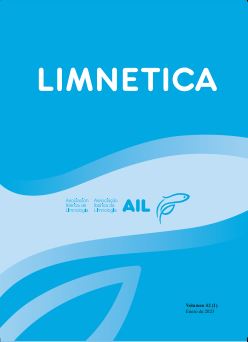Temporal stability in beta diversity does not guarantee surrogacy or compositional stability in a micro-phytoplankton metacommunity
Resumen
Temporal stability in beta diversity does not guarantee surrogacy or compositional stability in a micro-phytoplankton metacommunity. In this study, we evaluated phytoplankton community organization (i.e., microalgae filtered in 20 μm mesh-sized plankton net) in a highly dynamic subtropical tidal river over three years. Specifically, we assessed temporal stability in the spatial organization of phytoplankton, the diatoms’ efficiency as an indicator (surrogate group) of ecological patterns of other phytoplankton groups, the temporal variation in species composition, and the beta diversity of a metacommunity. We performed six sampling occasions at the end of the summers and winters from 2017 to 2019 at 16 sampling points comprising a strong environmental gradient in the Guaraguaçu River, South Brazil. We tested for correlations of community structures from different periods and for correlations between diatoms species and those from other phytoplankton groups using Mantel tests. Species compositions were compared among periods using a permutational multivariate analysis of variance, and temporal variation in metacommunity beta diversity was evaluated using null models. There was temporal stability in the spatial dissimilarities of communities. Diatoms were poorly correlated with the other phytoplankton groups. The temporal stability in spatial structure, a facet of beta diversity, was in line with the temporal stability in compositional variation – a measurement of metacommunity beta diversity. Our results also showed that such stability was not static, since community compositions varied over time, mainly between seasons. We conclude that even in a highly dynamic tidal river, the temporal stability of spatial organization may indicate that the spatial gradient is so strong that it maintains spatial structuring over time. Such patterns were maintained even with the dynamic species changes over seasons. The fact that different phytoplankton groups do not respond similarly to the spatial gradient reinforces that microalgae should be analyzed separately in ecological studies, and long-term monitoring should consider different algal groups for a complete assessment of ecological patterns.
Descargas
Publicado
Número
Sección
Licencia
Los autores que publican en esta revista están de acuerdo con los siguientes términos:
- Limnetica está bajo una licencia de Creative Commons Atribución-NoComercial 4.0 Internacional.
b. Los autores pueden establecer por separado acuerdos adicionales para la distribución no exclusiva de la versión de la obra publicada en la revista (por ejemplo, situarlo en un repositorio institucional o publicarlo en un libro), con un reconocimiento de su publicación inicial en esta revista.
c. Se permite y se anima a los autores a difundir sus trabajos electrónicamente (por ejemplo, en repositorios institucionales o en su propio sitio web) antes y durante el proceso de envío, ya que puede dar lugar a intercambios productivos, así como a una citación más temprana y mayor de los trabajos publicados (Véase The Effect of Open Access) (en inglés).


